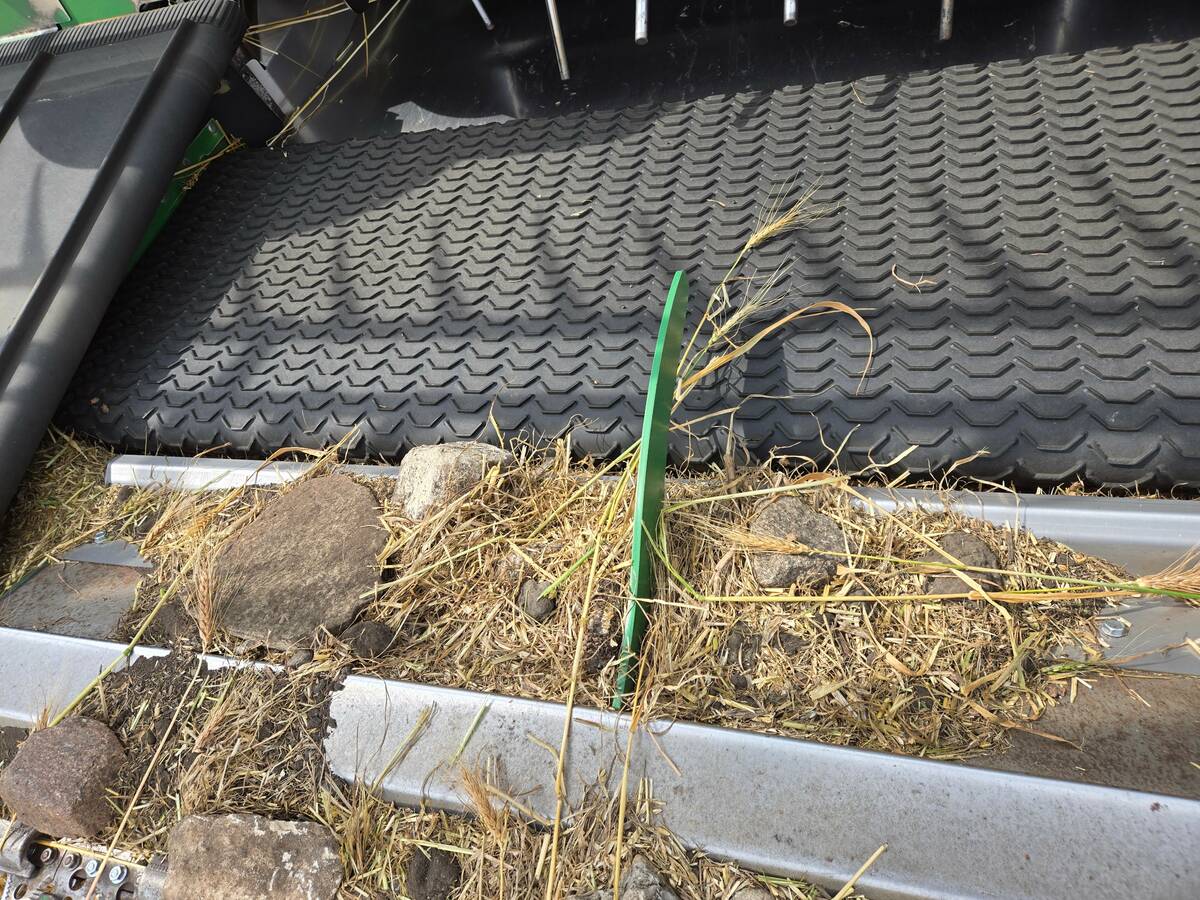Syngenta just dropped a new molecule onto the Canadian crop protection market that provides growers with another option in their fight against costly plant diseases.
“The adepidyn molecule, which is a new carboxamide, or SDHI (succinate hydrogenase inhibitor), or Group 7 from Syngenta, is a molecule that is going to have activity in a whole list of crops, and a whole list of challenging diseases,” said Eric Phillips of Syngenta.
He said the molecule underpins the company’s Miravis brand family of fungicides that will be available to Canadian growers for the 2020 growing season.
Read Also

Alberta brothers develop rock-solid innovation
Brothers with TrueLine MFG invents new rock damsfor headers that is exploding with interest across Canada, the U.S. and Australia which serves as a cheap protective measure for expensive farm equipment.
There are five products in the Miravis fungicide lineup.
Miravis Bold is a standalone product of adepidyn that extends the fungicide application window for sclerotinia in canola.
“It’s labelled from 10 percent to 50 percent bloom, which allows farmers to perhaps treat acres earlier, or get into the field earlier than historically they have been able to with competitive treatments,” Phillips said.
Miravis Ace is the next product and it has adepidyn mixed with propiconazole, a Group 3 fungicide, that gives growers a new mode of action to targets fusarium head blight in wheat.
“When we talk about the adepidyn molecule being a carboxamide, we’re talking about a new novel mode of action for fusarium head blight. Historically, farmers have been using a triazole or Group 3 class of chemistry,” Phillips said.
Adepidyn is a Group 7 chemistry so it doesn’t represent a new chemistry class, but it does offer a new mode action on fusarium head blight in wheat that isn’t available anywhere else.
The third of the five products coming to market that will be of most interest to western Canadian broad-acre producers is Miravis Neo.
“Here is adepidyn (Group 7) mixed with azoxystrobin (group 11) and propiconazole (group 3). So you’ve got a three mode of action, three AI (active ingredient) fungicide targeting some of the key diseases in pulse crops, whether it be ascochyta or mycosphaerella,” Phillips said.
This product is the first three-mode of action foliar fungicide registered for pulse crops.
Miravis Neo also controls a broad range of foliar corn diseases, including grey leaf spot and northern corn leaf blight, and suppresses fusarium and gibberella ear rots.
The final two products in the Miravis lineup are specialty brands that address diseases for fruit and vegetable farmers.
“Miravis Duo, which is an adepidyn (Group 7) and difenoconazole (Group 3), and Miravis Prime is adepidyn and fludioxonil (Group 12).


















